Where are the Highlands at their most beautiful? – On the Isle of Skye! The island in the west of Scotland offers wild scenery, exciting destinations and culinary delights. Here’s everything you need to know about the “Isle of Mist”
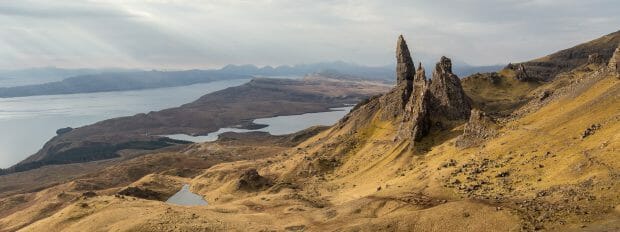
Info about Skye:
» General
» Sightseeing
» Food and drink
» Getting there
» Best time to travel
» Day Tours
Like no other holiday destination, Skye combines all the assets of the Highlands: rolling hills, bizarre mountain ranges, bays, beaches, lochs, sea – all in beauty and abundance. In addition, there is an extremely high density of sights: There are several castles, two whisky distilleries, a historic village, a famous rocky outcrop, beautiful and varied mountain scenery, idyllic harbor towns, and much much more.
About the Isle of Skye: The Isle of Mist
The Isle of Skye is part of the Inner Hebrides of Scotland and is its largest island. It lies off the west coast about level with the Highlands capital Inverness. It is now connected to mainland Scotland by a motorway bridge.
Skye in Gaelic means “An t-Eilean Sgitheanach” (pronounced roughly “an tschehlan skianach”). Exactly what the name means is not entirely clear. Already Ptolemy called it “scetis insula” on his world map from about 150 AD. So the name dates from long before Gaelic or English was spoken on Skye.
The island does have a Gaelic nickname, however: Eilean a’ Cheò (pronounced something like “ehlän e choo”) – the Island of Mist. An apt description, clouds often hang from the high mountains, obscuring the face of Skye.
The Isle of Skye – since it was linked to the rest of Scotland by a motorway bridge – has become a real tourist magnet. No wonder, it is not stingy with cultural and scenic highlights. Sometimes there are quite a lot of visitors in one place. But don’t worry: the island is big – bigger than many people think. Especially because it is divided into several peninsulas, so it has a very long coastline.
Landscape: Wonderful and varied
I know of no other place where so many different landscapes can be seen. To the south, the black and red Cuilins rise sharply and fearsomely into the sky – to nearly a thousand metres the highest of them reaches. Always remember: the land here starts at sea level. This makes for beautiful combinations of lochs and mountains, such as Loch Coruisk or Coir’ a’ Ghrunnda.
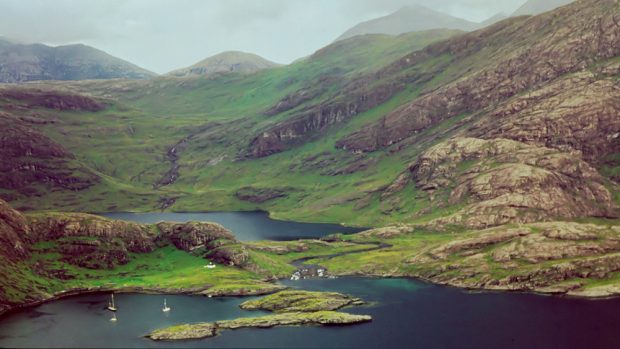
In the north, however, on Waternish and Trotternish you will find artfully carved mountains, with soft and sometimes bizarre shapes: The MacLeods Tables with their flattened peaks, the humpbacked Quiraing or the rocky Old Man of Storr.
But Skye isn’t all mountains: it’s true that the island is only 40 kilometres wide at its thickest point and 80 kilometres long. But many inlets reach inland, resulting in a coastline of over 500 kilometres. Unfortunately, this includes few sandy beaches, but enchanting bays such as Talisker Bay or the steep cliffs at Neist Point more than make up for this shortcoming.
By the way, the inlets also divide Skye into its various peninsulas: Minginish, Duirnish, Waternish, Trotternish, Sleat are the largest.
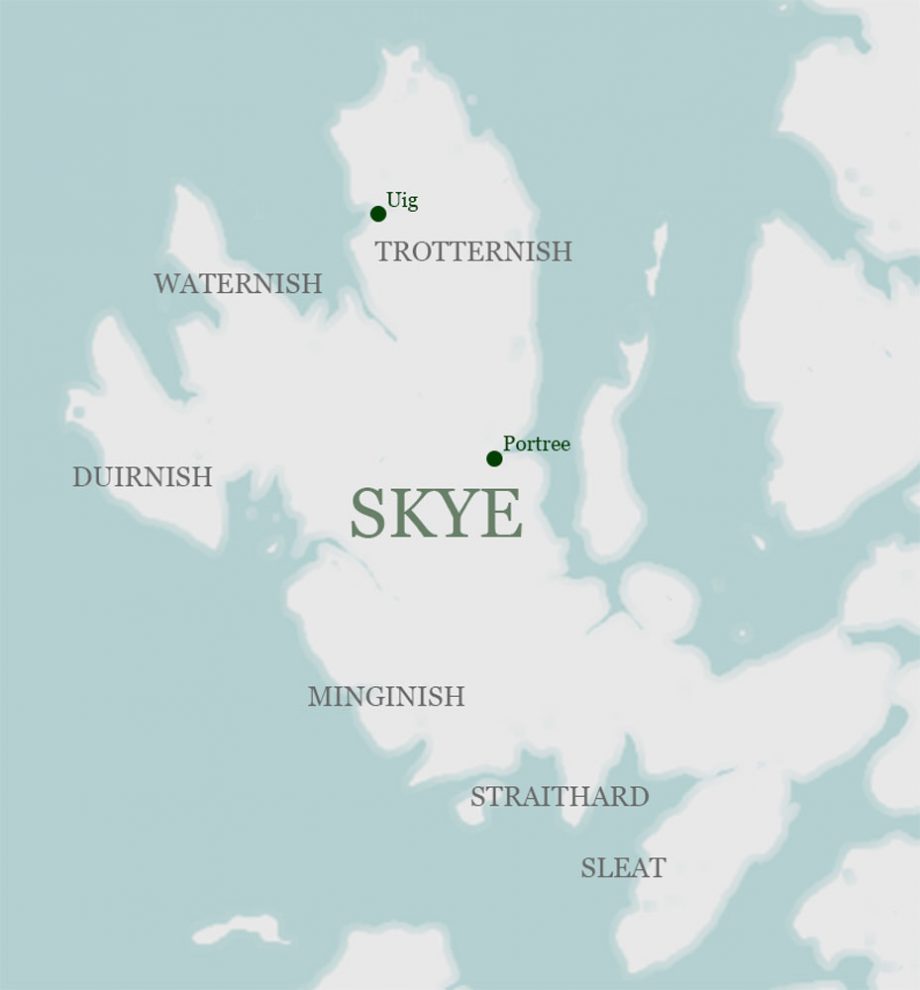
The main places of interest on the Isle of Skye
The island is admittedly a total work of art. But some places stand out even here. Here come the top ten sights of the Isle of Skye listed from north to south.
Quiraing
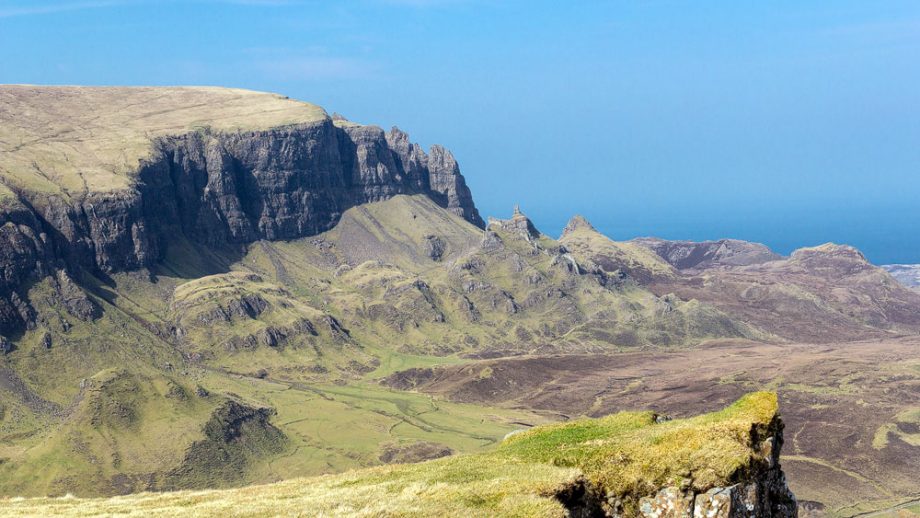
The so-called Trotternish Ridge on the northern peninsula forms an altogether scenery worth seeing. But it can be seen particularly beautifully at the Quiraing Viewpoint just off the road. The rugged cliff edges in the foreground, the blue sea in the background. A treat for the eye.
Learn more about the Quiraing Viewpoint here.
Fairy Glen
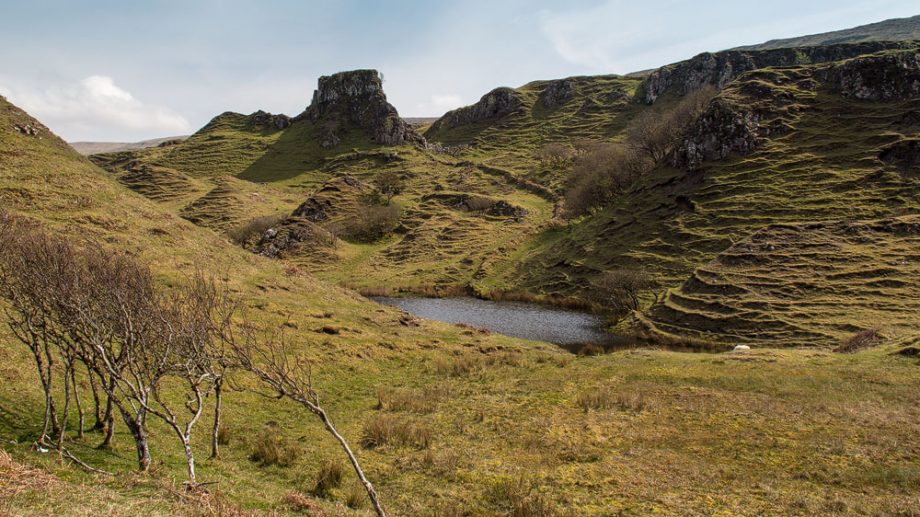
The hills and rocks in this little glen are so bizarre that the people of Skye thought they were built by fairies. A wonderful landscape with an enchanting atmosphere.
More about the Fairy Glen here.
Old Man of Storr
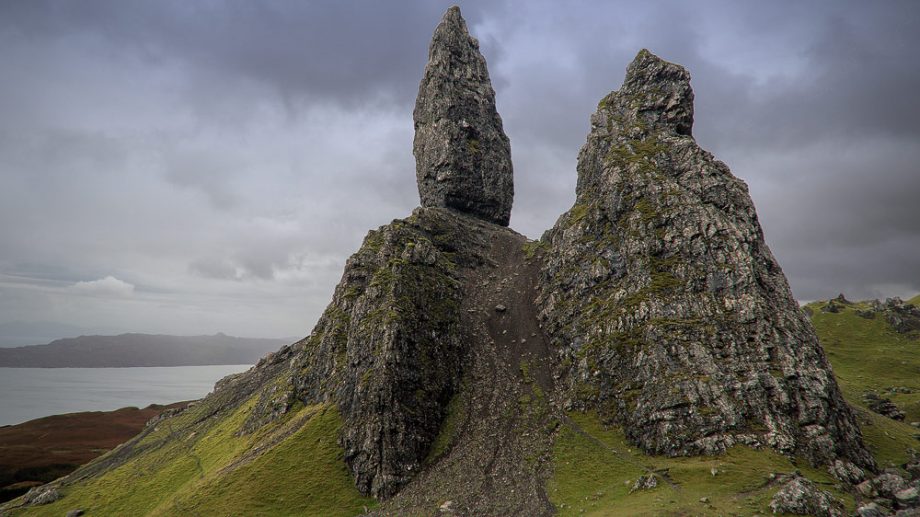
Like a sentinel, he stands to the south, not far from Portree at the start of the Trotternish peninsula. The Old Man of Storr is a large rocky needle framed by more rugged cliff edges. To really enjoy it, it’s worth a hike there.
More info on the Old Man of Storr here.
Dunvegan Castle
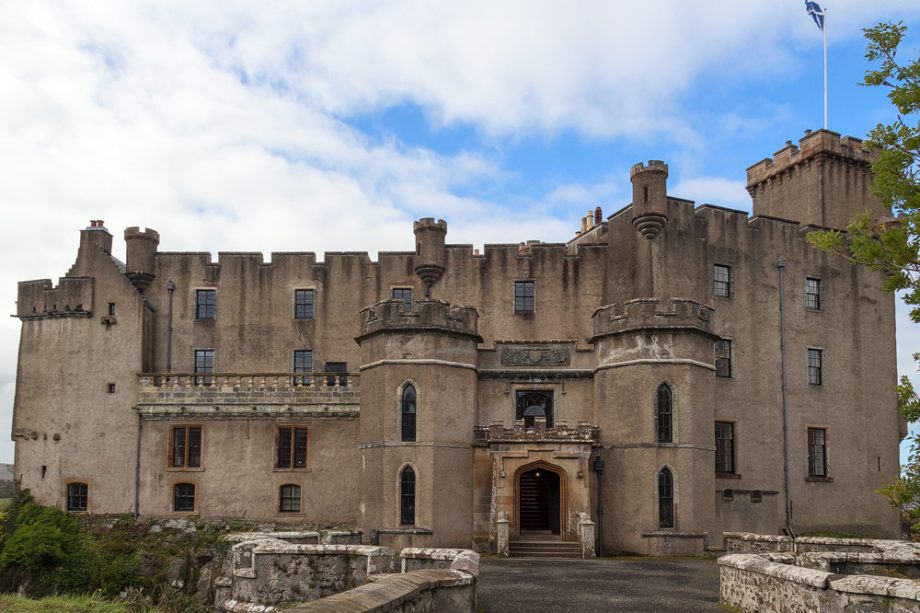
The ancestral seat of the ancient island clan MacLeod. Surrounded by beautiful gardens and worth seeing inside, a visit to this castle is definitely worthwhile.
More info on Dunvegan Castle here.
Neist Point
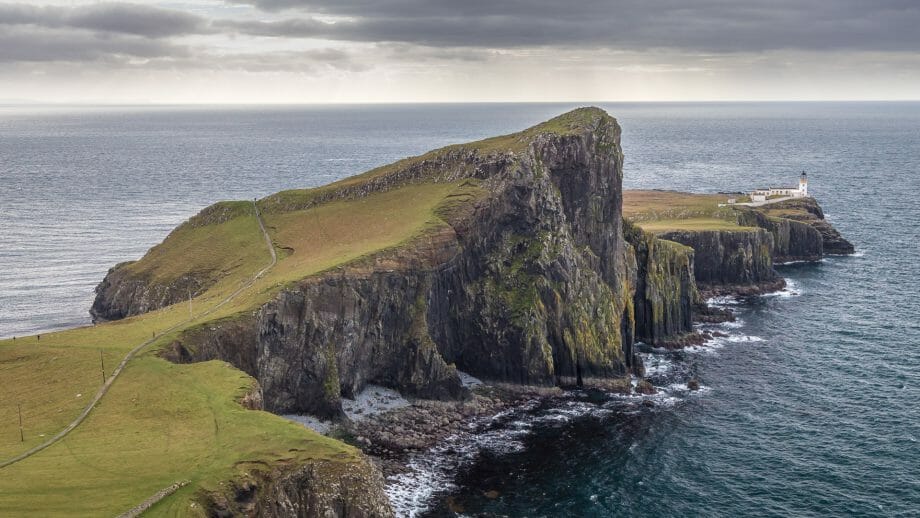
A unique promontory of land on the west side of the island, with a small lighthouse at the end. In the distance, in good weather, you can see the Outer Hebrides.
More on Neist Point here.
Portree
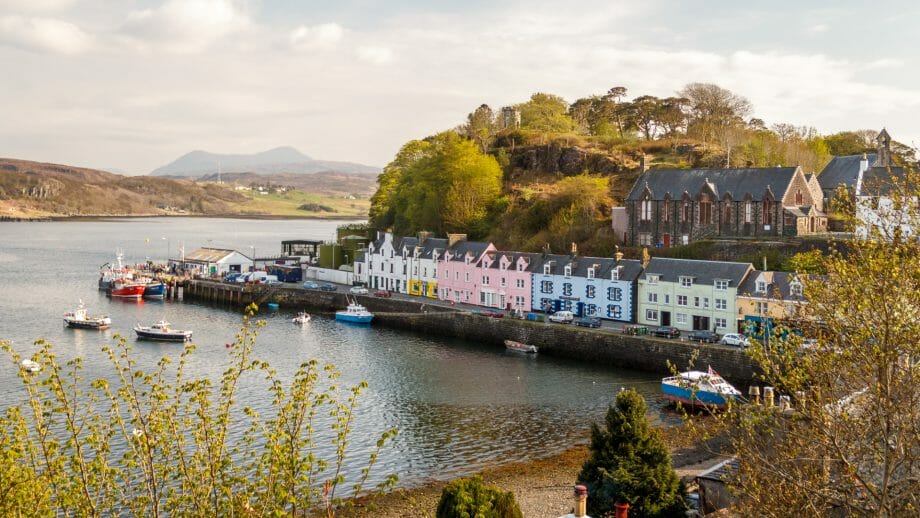
The main town on the Isle of Skye. Brightly painted houses line the sheltered bay. There are shops and pubs here. The fish & chips down by the harbour divide visitors: some swear by them, others find them too greasy.
Read more about Portree here.
Fairy Pools
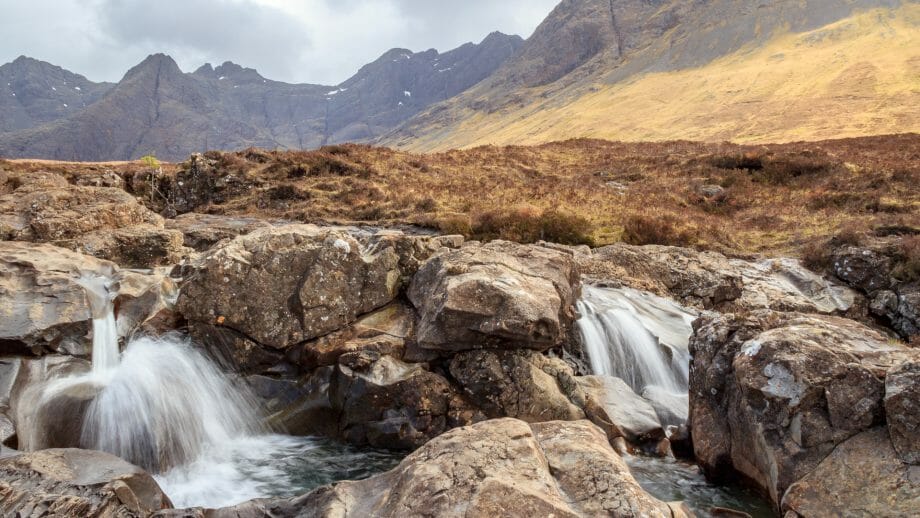
Light blue water cascades through rock pools, all against the backdrop of Skye’s black Cuilins. No wonder many believed this was where the fairies bathed in Coire na Creiche. Yet this was also the place where the last battle between the MacDonalds and MacLeods took place.
More about Coire na Creiche and the Fairy Pools here.
Talisker Distillery
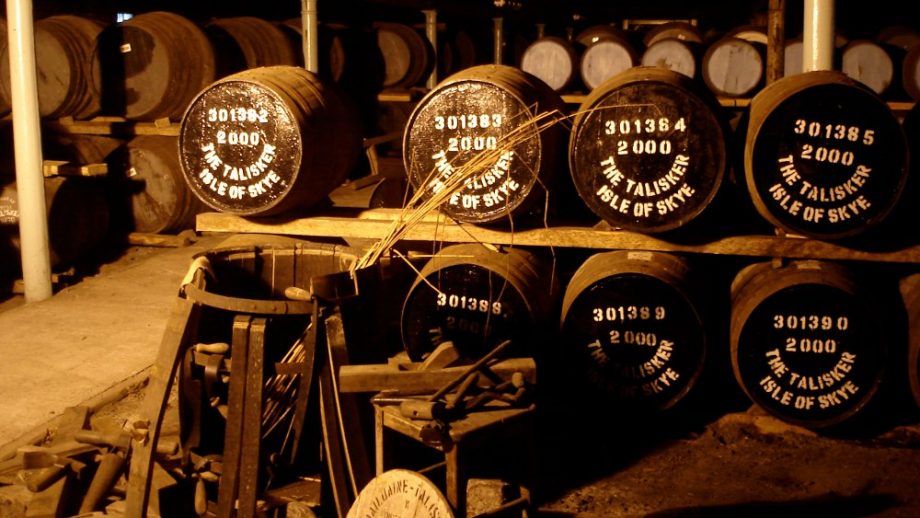
A true Scottish island wouldn’t be perfect without whisky. Skye is home to the smoky and pungent Talisker whisky. Take a guided tour to learn about the whisky-making process.
More on the Talisker Distillery here.
Sligachan Bridge
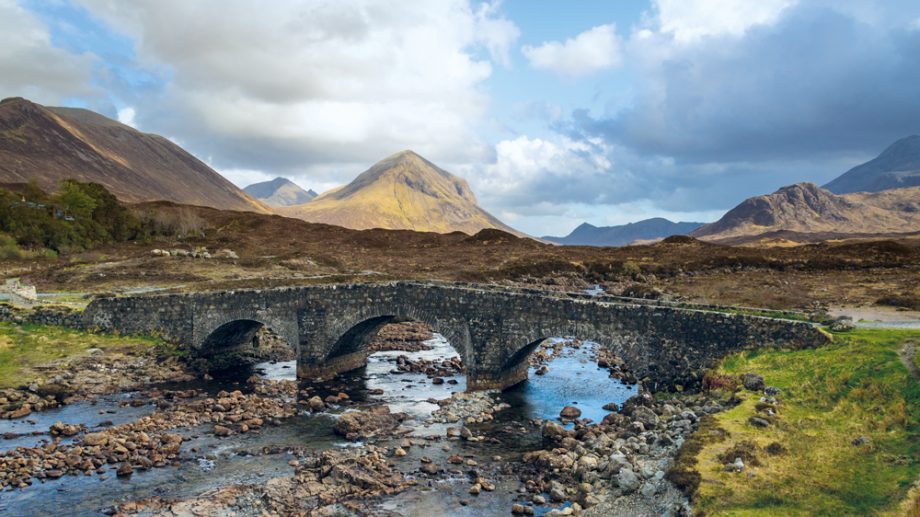
It’s probably the most famous bridge in the Highlands and Islands of Scotland: the Sligachan Bridge with the mountain panorama of the Cuilins behind it. Situated right on the main road, it’s definitely worth stopping here – even if it’s just to take in the view for a moment.
More info on the Sligachan Bridge here.
Elgol and Loch Coruisk
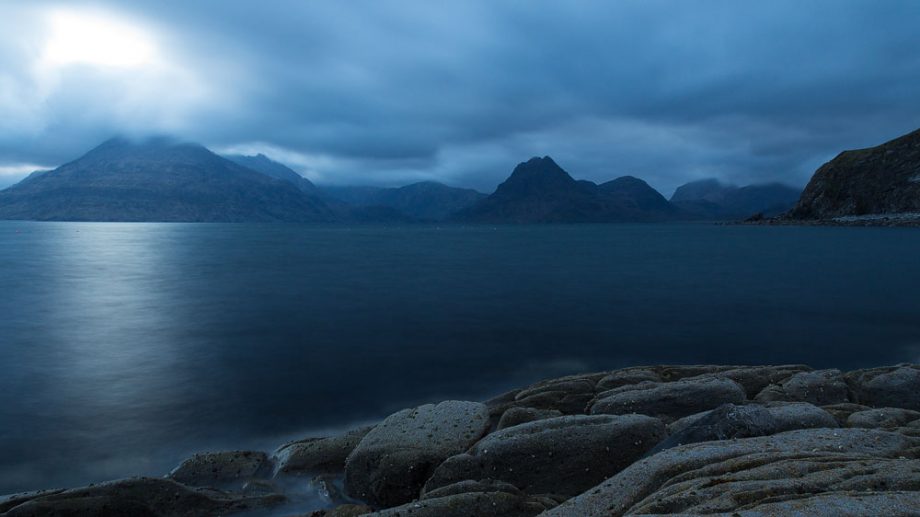
At the end of the Strath peninsula lies the village of Elgol. The view across the sea to the Cuilins would be worth a visit on its own, but boats also leave from here for Loch Coruisk, which is inaccessible by car.
More info on Elgol here.
By the way, all the Isle of Skye attractions featured on this website can be reached here.
Food and drink: From snack to luxury dinner
In the more than 20 years that I have now been travelling the island, an incredible amount has happened in the area of gastronomy. For the small hunger, for example, small snack bars and cafes of high standard have been established.
All the way up north, the Skye Pie Café serves its signature pies with fish or meat but also in vegetarian variations. Almost legendary is the Oyster Shed in Carbost near the Talisker Distillery. Here you can slurp down freshly caught oysters.
A new highlight is the An Crùbh on Sleat in the south of the island. The café and community centre also has a shop and serves cakes and hot food into the afternoon.
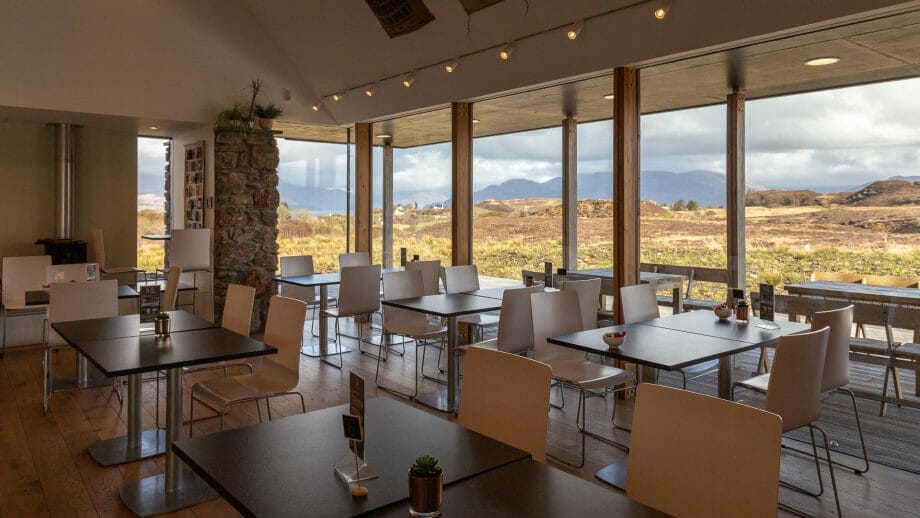
For upscale dining, there are even a few Michelin-recommended restaurants. For example, the Coruisk House in Elgol, the Kinloch Lodge or the Three Chimneys.
Of course, there are quite a few good restaurants right in Portree and around the island. An overview can be found on this map.
In addition, there are many culinary products on the island: besides Talisker whisky, there is a second distillery on the Sleat Peninsula called Torabhaig. Other alcoholic highlights: the ales of Isle of Skye Brewing and the Misty Isle Gin. For seasoning food, there’s also salt from the Isle of Skye Seasalt Company.
History: Vikings and Clans
Remains from the Iron Age and earlier have been found on Skye. Today, visitors can still see some cairns, duns and brochs, buildings from the early period. The Picts have also left traces in the form of symbolic stones.
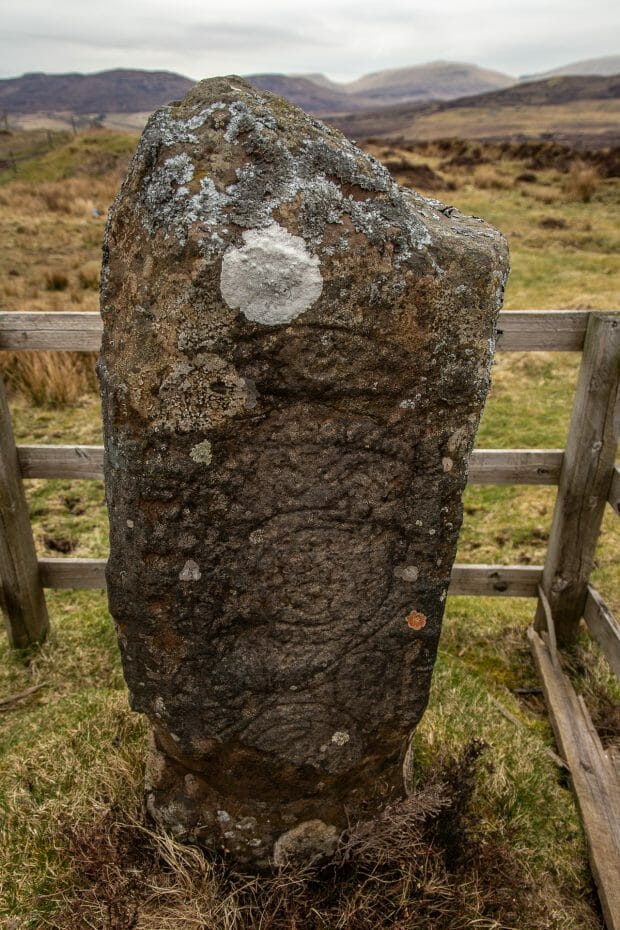
When the Celtic kingdom of Dalriada or Dál Riata rose in the sixth century, Skye did not become a direct part of it, but Christian missionaries brought the faith, and to some extent the Gaelic language, with them to Skye. Many names such as the Cill Chriosd indicate this. From the eighth century, the Vikings appropriated the island.
Skye was thus under Norse rule for around 400 years. Their legacy can still be clearly seen today, namely in the place names. For example, the endings “bost”, “ness/nish” or “aig” come from the Norsemen. “Bost” for instance means “home of”. So Carbost is the home of a former Norse farmer named Karri. “Ness” or “nish” denote a headland, while “aig” comes from “vik” and describes a bay.
When the Vikings were finally defeated and driven out, two clans divided the island between themselves – the MacDonalds ruled the south and the MacLeods the north. Of course (how could it be otherwise) the two clans were enemies to the death. So it was on Skye that the last clan battle on British soil took place.
Of the MacLeods, Dunvegan Castle can still be seen today, including the famous fairy flag. To the south at Armadale Castle, the MacDonalds cherish their heritage in their own heritage center.
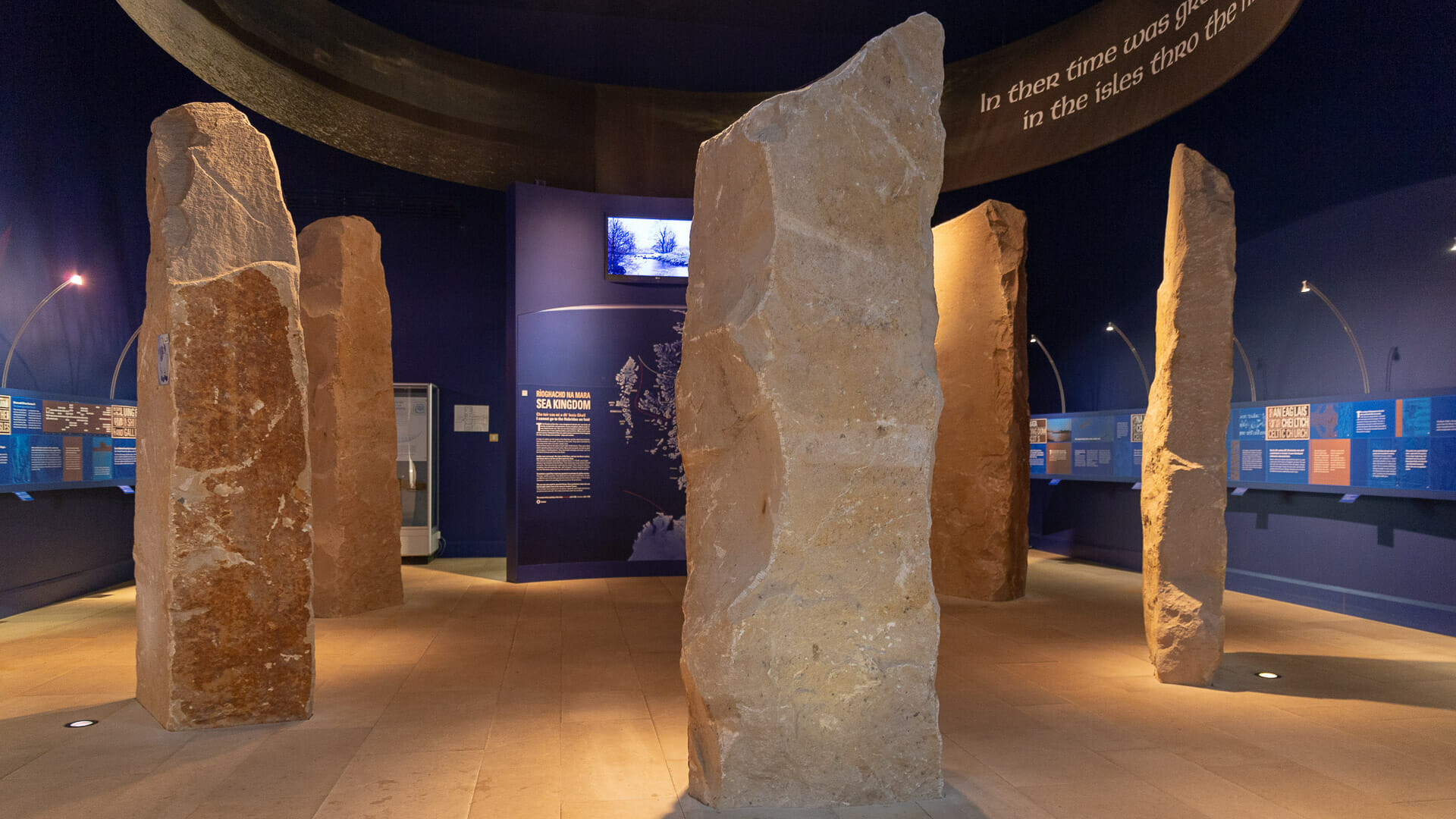
Easily Skye’s most famous historical figure is a woman: Flora MacDonald, among others, helped Bonnie Prince Charlie escape after the failure of the Jacobite Rebellion. For this, and for her other deeds, a large memorial stone was donated to her on her grave.
Naturally, the period of clearances did not leave Skye unscathed: Between 1820 and 1930, the population halved. In some cases, the inhabitants were forcibly shipped off to the New World on ships; in others, hunger or poor economic prospects drove them away.
The farmers’ revolt in 1882 became famous. The farmers of the “Braes” area on Skye resisted the poor conditions on the part of the landowners and the unfavourable grazing rights. Clashes broke out with the police, who cracked down. But this “Battle of Braes” had its good side. Demanded by nationwide public outrage, the government set up a commission that eventually enacted the Crofters Act. In it, farmers are promised more security and fair rents.
The crofters lived in their blackhouses until the 20th century. A typical settlement of this type survives on Skye at the Museum of Island Life and can be visited.
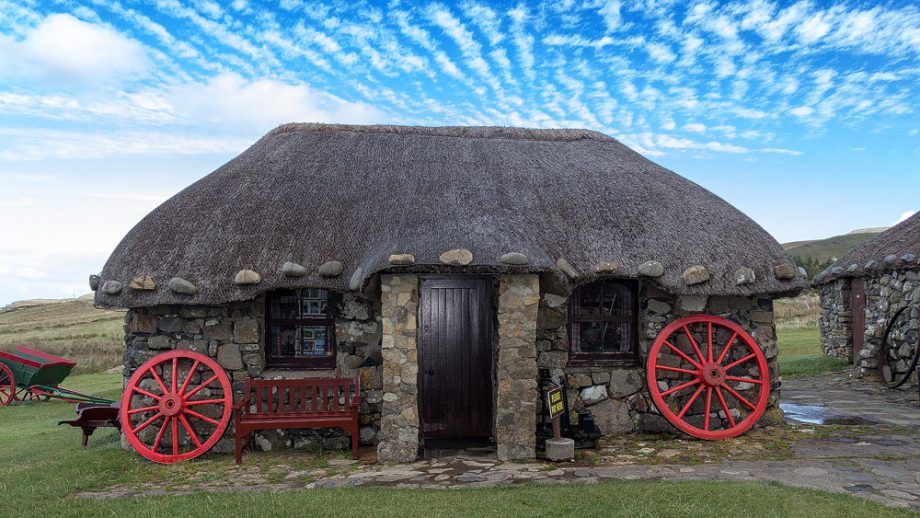
People: Life on Skye
Skye is home to around 10,000 Scots, which is only about 6 people per square kilometre – by comparison, Inverness would already have 25 and Germany has 230.
Since tourism discovered the island, the population figures have risen again. Unemployment is also on the decline. However, the unemployment statistics of the island show strong fluctuations between summer and winter – also due to the fact that in summer tourism requires more help.
Slightly less than half of the inhabitants still speak Gaelic today. As a result, many place-name signs here are also bilingual – Gaelic above, English below. In addition, the Sabhal Mòr Ostaig College was founded near Armadale. A centre dedicated to the promotion of Gaelic language and culture.
The most important place on the island is the capital Portree, which is home to about 2,100 island residents. Another important place is ferry port is Uig. From here you can cross to the Outer Hebrides.
Like all Highlanders, Skye’s residents are religious: just over half belong to the Church of Scotland, a quarter to the Free Church and around ten per cent are Catholic.